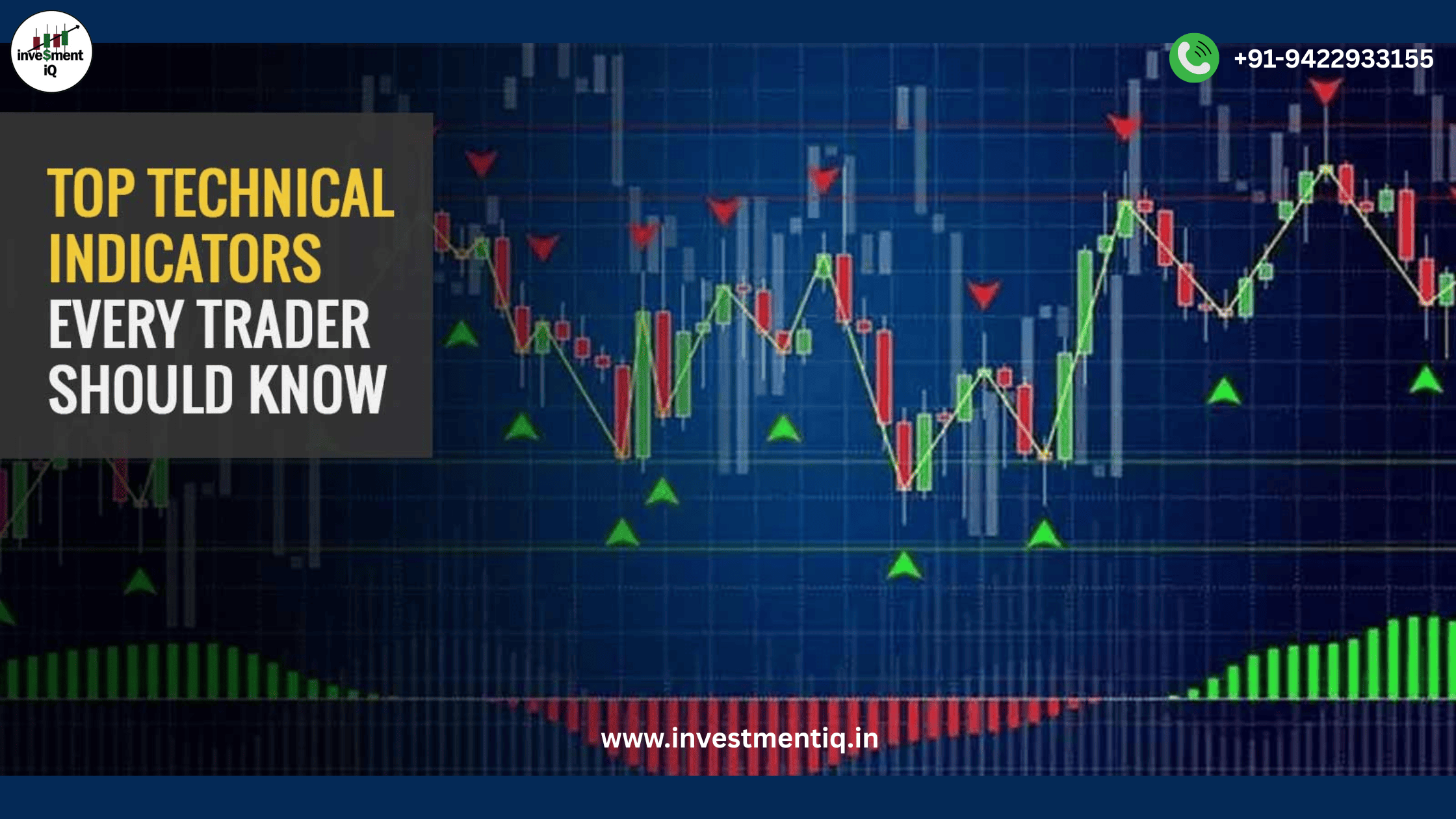Top Technical Indicators Every Trader Must Know: A Beginner’s Guide
Trading might feel daunting at first. However, knowing the right tools can help you succeed. A strong way to analyze the stock market is by using technical indicators. These indicators help traders spot trends. They also aid in making smart decisions. This way, traders can boost their chances of making profits.
This guide is for everyone. If you’re a beginner or want to improve your money skills, you’ll discover the important technical indicators every trader must know. Let’s dive in!
1. Moving Averages (MA) – The Trend Tracker
Moving averages smooth price changes. This helps you see trends more clearly over time. The two most commonly used types are:
- Simple Moving Average (SMA) – Calculates the average price over a specific period.
- Exponential Moving Average (EMA) – Puts more focus on recent prices. This helps spot trends faster.

Example: A stock price that goes above its 200-day moving average might show an uptrend!
2. Relative Strength Index (RSI) – Spot overbought and oversold conditions
The RSI measures how fast and how much prices are changing. It ranges from 0 to 100:
- Above 70 = Overbought (Potential Sell Signal)
- Below 30 = Oversold (Potential Buy Signal)

Example: If a stock has an RSI of 25, it might be undervalued and due for a price bounce!
3. Moving Average Convergence Divergence (MACD) – Momentum Indicator
MACD helps traders understand market momentum by comparing two moving averages:
- MACD Line (Shorter MA minus Longer MA)
- Signal Line (Smoother version of MACD line)
When the MACD line crosses above the signal line, it’s a bullish signal (buying opportunity). When it crosses below, it’s a bearish signal (potential sell signal).

If the MACD crosses above the signal line and the volume goes up, it shows a strong uptrend!
4. Bollinger Bands – Volatility Checker
Bollinger Bands consist of three lines:
- Middle Band (SMA)
- Upper Band (+2 Standard Deviations above SMA)
- Lower Band (-2 Standard Deviations below SMA)
Prices often move between these bands. They widen during high volatility and narrow when the market is stable.

If a stock breaks the upper band with high volume, it may mean a bullish breakout!
5. Fibonacci Retracement – Predicting Pullbacks
This tool uses key Fibonacci levels (23.6%, 38.2%, 50%, 61.8%). Traders use it to identify potential support and resistance levels.

Example: If a stock rallies from $100 to $150 and retraces to $125 (50% level), it may find support and continue upward!
Conclusion:
Using technical indicators can change your trading from guessing to making smart choices. Indicators such as Moving Averages, RSI, MACD, Bollinger Bands, and Fibonacci Retracement offer helpful insights. They show market trends, momentum, and possible reversals. No single indicator ensures success. Combine a few indicators and match them with a solid trading strategy for better results.
you may be interested in this blog here:-
What is the Contrast Between Favored Stock and Normal Stock?
Day Trading Guide for August 7, 2024: Intraday supports, resistances for Nifty50 stocks



